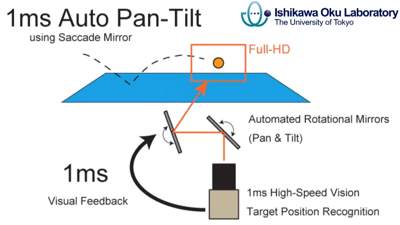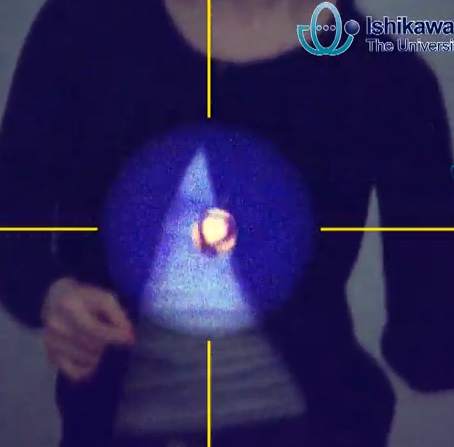| Camera Fast Enough To Track Ping Pong Balls |
| Written by Alex Armstrong |
| Saturday, 11 August 2012 |
|
Artificial vision is getting better all the time, but what about tracking really fast movement - a ping pong ball, say? In this case it isn't just about algorithms, the basic input device has to be fast enough to capture the image and stay with it as it moves. It is a well known that humans don't really see a ping pong ball's position before they hit it. It is all a matter of computing where it is given the initial conditions. This is remarkable enough, but what about being able to see the ball from the moment it is hit, following its flight until is it hit for a second time and so on? This is a tough problem because even if you have a high-speed camera it has to move fast enough to follow the action and high-speed cameras generally have a lot of mass - which works against moving fast. Professor Masatoshi Ishikawa from the University of Tokyo has a high-speed camera, and he has borrowed an idea from disco lighting to make it move even faster. Lighting displays and scanners generally work, not by moving the scanning laser at super fast speeds, but by placing a mirror in front and moving the mirror. The advantage is that the mirror is light and it can move very fast.
Now apply the same idea to a high speed camera using two mirrors to provide high speed automatic pan and tilt. The mirrors are under computer control and its just a matter of software to keep the ball in the center of the frame.
The result is very impressive and can produce full HD images that look image stabilized. Take a look at the video:
As you watch you can't really believe that ping-pong was ever a difficult game - the ball is so easy to track! It is suggested that this has applications in sports broadcasting and other fast moving TV. It could also be useful in many areas of science where something is moving and needs to be tracked. But its ultimate application is probably in robotic devices that play ping-pong better than any human ever could!
More Informationhttp://www.k2.t.u-tokyo.ac.jp/mvf/SaccadeMirrorFullHD/index-e.html Related ArticlesSuper Seeing - Eulerian Magnification
Comments
or email your comment to: comments@i-programmer.info To be informed about new articles on I Programmer, install the I Programmer Toolbar, subscribe to the RSS feed, follow us on, Twitter, Facebook, Google+ or Linkedin, or sign up for our weekly newsletter.
|
| Last Updated ( Saturday, 11 August 2012 ) |




